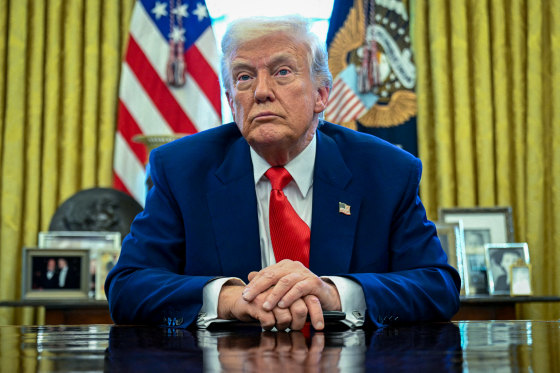Trump Tariffs Explained: A Comprehensive Timeline and Economic Impact (2017–2025)
President Donald Trump's administration has significantly reshaped U.S. trade policy through the implementation of extensive tariffs aimed at addressing trade imbalances and revitalizing domestic manufacturing. These measures have sparked global economic debates and reshaped international trade dynamics.

Early Tariff Actions and Objectives
In the early months of 2025, President Trump introduced a series of tariffs targeting imports from key trading partners, including Canada, Mexico, China, and the European Union. The administration's objectives were multifaceted:
-
- Addressing Trade Deficits:
The tariffs aimed to reduce the U.S. trade deficit by imposing duties on imports from countries with which the U.S. had significant trade imbalances. For instance, tariffs of 25% were levied on goods imported from Mexico and Canada, with energy imports from Canada facing a 10% tariff. Economic Policy Institute -
- Protecting Domestic Industries:
By taxing imported goods, the administration sought to shield U.S. industries from foreign competition, thereby encouraging domestic production and job creation. This strategy was particularly evident in the steel and aluminum sectors, where tariffs were imposed to counteract what the administration perceived as unfair trade practices.

Escalation of Tariffs and Global Impact
The tariff measures escalated in scope and intensity over time:
-
- China Tariffs:
The administration raised tariffs on Chinese imports to an effective 125%, leading to reciprocal measures from China, which imposed tariffs on U.S. goods. This tit-for-tat escalation intensified the trade conflict between the two largest economies. -
- Global Economic Reactions:
The implementation of these tariffs disrupted global financial markets. Major indices in Europe and Asia experienced sharp declines, reflecting investor concerns over the potential for a protracted trade war and its impact on global economic growth.
Domestic Economic Effects
The tariffs had notable effects on the U.S. economy:
-
- Consumer Prices:
Studies indicated that the tariffs led to increased prices for both imported and domestically produced goods. The U.S. International Trade Commission found that in 2021, tariffs increased prices between 1.7% and 7.1% in sectors such as apparel, car parts, furniture, and computer equipment. -
- Business Strategies:
In response to tariffs, companies explored alternatives such as sourcing from non-affected countries and stockpiling goods. However, the long-term effectiveness of these strategies remained uncertain.
Recent Developments
As of April 9, 2025, the Trump administration introduced a new wave of tariffs, further intensifying trade tensions:
-
- "Liberation Day" Tariffs:
On April 2, President Trump signed an executive order imposing a minimum 10% tariff on all U.S. imports, with higher rates applied to imports from 57 countries. This move, termed "Liberation Day," aimed to bolster U.S. manufacturing and address perceived unfair trade practices. -
- Market Reactions:
The announcement of these tariffs led to significant market volatility. Dow Jones futures fell by 0.2%, while Nasdaq 100 futures rose by 0.7%. Investors expressed concerns that these tariffs, totaling almost $1 trillion, could push the U.S. into recession, marking the biggest tax hike since 1942.
Global Responses
Internationally, the tariffs elicited various reactions:
-
- China's Retaliation:
In response to the U.S. tariffs, China announced an 84% tariff on all U.S. goods, up from a previous 34%. This move unsettled global financial markets and highlighted the escalating nature of the trade conflict. -
- Allied Concerns:
U.S. allies expressed concerns over the tariffs, urging restraint and cautioning against further escalation that could deepen a global economic downturn. The European Union, in particular, voiced apprehensions about the impact on international trade relations.
President Trump's tariff policies have profoundly impacted both the U.S. and global economies. While aimed at reducing trade deficits and revitalizing domestic manufacturing, these measures have led to increased consumer prices, strained international relations, and heightened market volatility. As the situation evolves, it remains to be seen how these policies will reshape global trade dynamics and their long-term effects on the U.S. economy.




